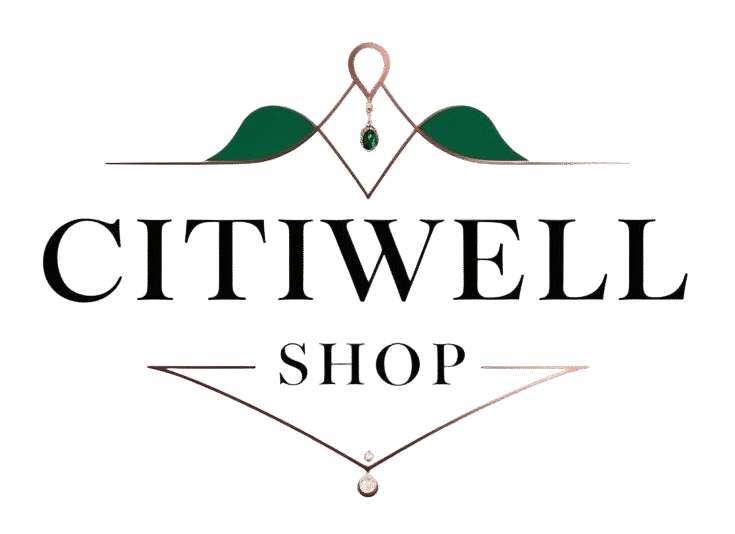This post may contain affiliate links which means we may receive a commission at no cost to you, if you make a purchase through a link. Please see our full disclosure for further information.
Do you dream of owning a coffee shop? A place where the aroma of freshly roasted beans mingles with the hum of conversation, where regulars sip lattes while typing on laptops, and first-time visitors pause to admire the decor before ordering?
Opening a coffee shop is more than a business venture—it’s creating a community hub. With the global coffee shop market valued at over $200 billion and growing 5.5% annually, the opportunity is real. But success requires more than passion for coffee; it demands strategic planning, technical know-how, and a knack for understanding what makes customers return. Let’s break down how to turn your dream into a thriving reality.
1. Decide on Your Business Type: Legal Structure Matters
Choosing the right business structure isn’t just paperwork—it impacts taxes, liability, and growth potential. Here’s how to decide:
- Sole Proprietorship: Best for solo owners with low startup costs (under $50,000). It’s easy to set up (no formal registration in most states) and offers full control, but personal assets are at risk if the business faces lawsuits or debt. Ideal for pop-up shops or tiny kiosks.
- LLC (Limited Liability Company): The sweet spot for most small coffee shops. Combines the simplicity of a sole proprietorship with liability protection—your personal assets (house, car) are shielded if the business is sued. LLCs also offer flexible tax options (you can file as a sole proprietor or corporation). Costs $50–$500 to register, depending on your state.
- Franchise: Brands like Starbucks or Dunkin’ offer built-in recognition and operational blueprints, but they come with steep fees (initial investment $250,000–$3 million) and strict rules (you must use their suppliers, decor, and menus). Franchises reduce risk but limit creativity—60% of franchisees report lower profit margins than independent shops due to royalty fees (5–10% of revenue).
- Independent Brand: Full creative control and higher profit potential, but you’ll need to build recognition from scratch. Successful independents often thrive by targeting niches—think vegan coffee shops, 24-hour study spots, or cafes with in-house roasters.
2. Calculate Startup Costs: The Hidden Numbers Behind “Opening Day”
Next, figure out how much money you need. Costs vary widely, but a small independent shop (500–800 sq ft) typically requires $80,000–$300,000 upfront. Breakdown includes:
- Renovations: $20–$100 per sq ft (depends on location condition; e.g., plumbing for coffee machines adds $5,000–$15,000).
- Equipment: Espresso machines ($5,000–$30,000 for commercial-grade), grinders ($500–$2,000), refrigeration ($3,000–$8,000), and POS systems ($1,500–$5,000). Leasing equipment can reduce upfront costs by 30–50% but adds monthly fees.
- Licenses & Permits: $1,000–$5,000 (health permits, business licenses, music licensing, etc., vary by city).
- Operating Capital: Save 3–6 months of expenses (rent, salaries, utilities) for slow periods—critical for 60% of new cafes that fail in the first year due to cash flow issues.
Pro Tip: Use industry benchmarks (e.g., National Coffee Association data) to estimate revenue: average coffee shops make $60,000–$160,000 annually, with high-performing locations exceeding $300,000.
3. Write a Business Plan: Your Roadmap to Profit
A business plan isn’t just for investors—it’s your daily guide. Include these technical sections:
Target Market Analysis
- Demographics: Age (25–35-year-olds spend 40% more on specialty coffee), income ($40,000+ households visit cafes 3x/week), and habits (remote workers stay 2+ hours, spending $15–$20).
- Psychographics: Do they value sustainability (72% of millennials prefer eco-friendly cafes) or convenience (drive-thru vs. sit-down)?
Competitive Audit
- Map competitors within a 1-mile radius. For each, note:
- Price points (espresso $3–$5, lattes $4–$7)
- Peak hours (7–9 AM and 3–5 PM are typical rushes)
- Weaknesses (slow service, limited vegan options, outdated decor)
Unique Selling Proposition (USP)
- Examples of High-Performing USPs:
- “Zero-waste cafe: All cups are compostable, and we recycle coffee grounds into fertilizer for local gardens.”
- “Barista training lab: Watch our certified Q-graders (coffee tasters) roast beans on-site.”
- “Pet-friendly with a ‘pup menu’ (pumpkin spice lattes for dogs, no caffeine).”
Financial Projections
- Revenue: Assume 50–100 customers/day in month 1, growing to 150–200 by year 1. Average ticket: $6–$8.
- Cost of Goods Sold (COGS): Coffee beans should be 15–20% of beverage costs; milk 10–15%.
- Break-Even Analysis: Calculate when revenue covers fixed costs (e.g., if rent is $3,000/month and profit per customer is $2, you need 1,500 customers/month to break even).
Explore the best coffee shops in Paris.
4. Find a Theme & Location: Data-Driven Choices
Theme: More Than Decor
Your theme should solve a problem for your target market:
- Productivity-focused: Ergonomic seating, fast Wi-Fi (100+ Mbps), and noise-canceling booths appeal to remote workers.
- Community hub: Host open mics, book clubs, or parent-and-toddler mornings to build loyalty.
- Nostalgic: 90s-themed cafes with retro video games and throwback playlists attract Gen Z and millennials willing to pay premium prices for “experience.”
Location: The Science of Foot Traffic
- Foot traffic counts: Use tools like Placer.ai to analyze pedestrian data. A location with 500+ daily passersby (students, office workers) is ideal.
- Visibility: A corner spot with large windows increases walk-ins by 30% vs. a hidden storefront.
- Rent-to-revenue ratio: Rent should not exceed 15–20% of projected monthly revenue. For example, if you expect $15,000/month, keep rent under $3,000.
- Zoning laws: Ensure the area allows food service—some commercial zones restrict late hours or outdoor seating.
5. Register Your Business: Legal Checklists
- Business name: Trademark it via the USPTO ($275–$325) to prevent copycats.
- EIN: Get a free Employer Identification Number from the IRS for taxes.
- Health permits: Pass inspections for:
- Proper milk storage (below 40°F to prevent bacteria)
- Handwashing stations (one per 10 employees)
- Ventilation for espresso machines (to reduce steam buildup)
- Insurance: General liability ($500–$1,000/year) and workers’ comp (required if you have employees) protect against accidents.
6. Source Equipment & Inventory: Quality vs. Cost
Equipment: Invest in the Workhorses
- Espresso machine: A dual-boiler model (e.g., Nuova Simonelli) maintains stable water temperature—critical for consistent shots. Avoid cheap single-boiler machines; they break down 3x more often.
- Grinder: Burr grinders (vs. blade) produce uniform grounds, which extract flavor evenly. Spend $1,500+ for commercial-grade.
- POS system: Toast or Square offers features like inventory tracking (alerts when milk is low) and loyalty programs (10% off for repeat customers).
Inventory: Freshness is Non-Negotiable
- Coffee beans: Source from roasters within 500 miles to ensure freshness (beans go stale after 2–4 weeks). Offer 2–3 single-origin options and 1–2 blends.
- Milk alternatives: Oat and almond milk are the top sellers (65% of non-dairy orders). Store them in dedicated fridges to avoid cross-contamination.
- Supplies: Biodegradable cups cost 10–15% more than plastic but reduce customer complaints by 40% in eco-conscious areas.
7. Marketing Plan: Attract & Retain Customers
Pre-Opening Hype
- Soft launch: Invite locals (via Nextdoor or community boards) for a free coffee in exchange for feedback. Fix issues (e.g., slow service) before the grand opening.
- Social media: Post “behind-the-scenes” content (roasting beans, decorating) on Instagram Reels. Use geotags to reach nearby users.
Grand Opening
- Offer a “buy one, get one free” deal for the first 3 days to drive traffic.
- Partner with local influencers (1,000–10,000 followers) for reviews—their audience is 5x more likely to visit than general ads.
Ongoing Strategies
- Loyalty program: A punch card (“10th coffee free”) increases repeat visits by 25%.
- Email marketing: Send weekly specials (e.g., “Tuesdays: 20% off pastries”) to build a 30%+ open rate.
- Upselling: Train baristas to ask, “Would you like oat milk instead? It’s our most popular option” to boost average ticket size by $1–$2.
Find out Top 100 Coffee Beans in the World.
8. Operations: Run Like a Well-Oiled Machine
- Staff training: Teach baristas to pull the perfect shot (25–30 seconds extraction time, 1.5–2 oz volume). A 1-hour daily training session for the first month reduces customer complaints by 60%.
- Scheduling: Use apps like When I Work to avoid overstaffing. Schedule 1 barista per 15 customers during peak hours.
- Maintenance: Clean espresso machines nightly (calcium buildup ruins taste) and service grinders monthly to prevent jams.
Conclusion: Brew Success with Preparation
Opening a coffee shop is a blend of art (creating a welcoming space) and science (crunching numbers, optimizing operations). By focusing on your USP, understanding your customers, and planning for the unexpected, you’ll build more than a business—you’ll create a place where memories are made over a cup of coffee.
Ready to start? Begin with a market survey of your target area. Talk to 50 potential customers about what they want in a coffee shop. Their answers will be your best recipe for success.
Disclaimer: The data, projections, and benchmarks provided in this guide are for informational purposes only and based on general industry trends. Actual costs, revenue, and success rates may vary due to location, market conditions, and individual business decisions. The author assumes no liability for financial or operational outcomes based on reliance on this information. Always consult with a financial advisor, legal professional, or industry expert before making business decisions.
Uncover further inspiration in our blog.





























